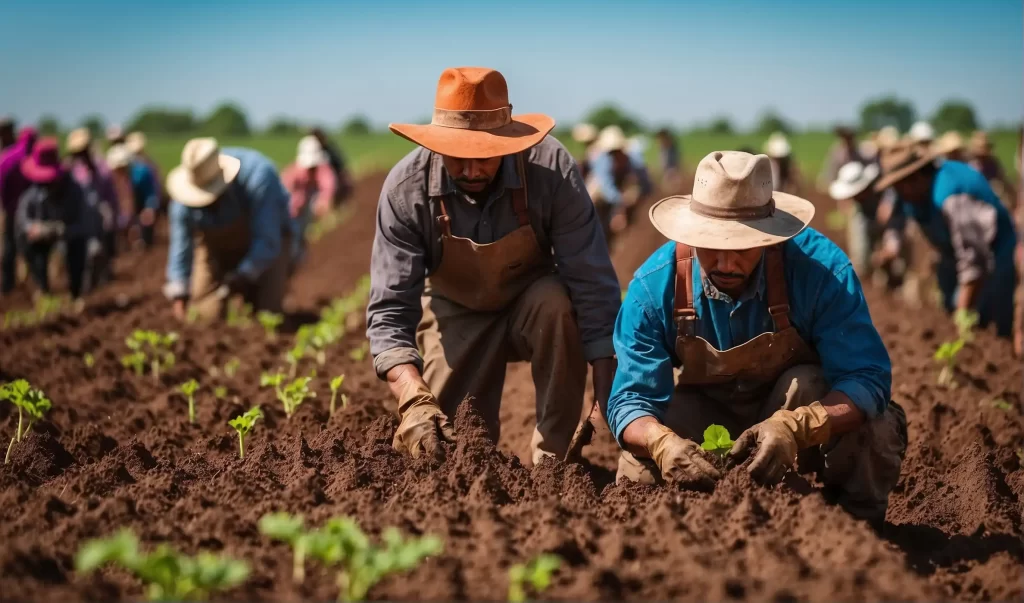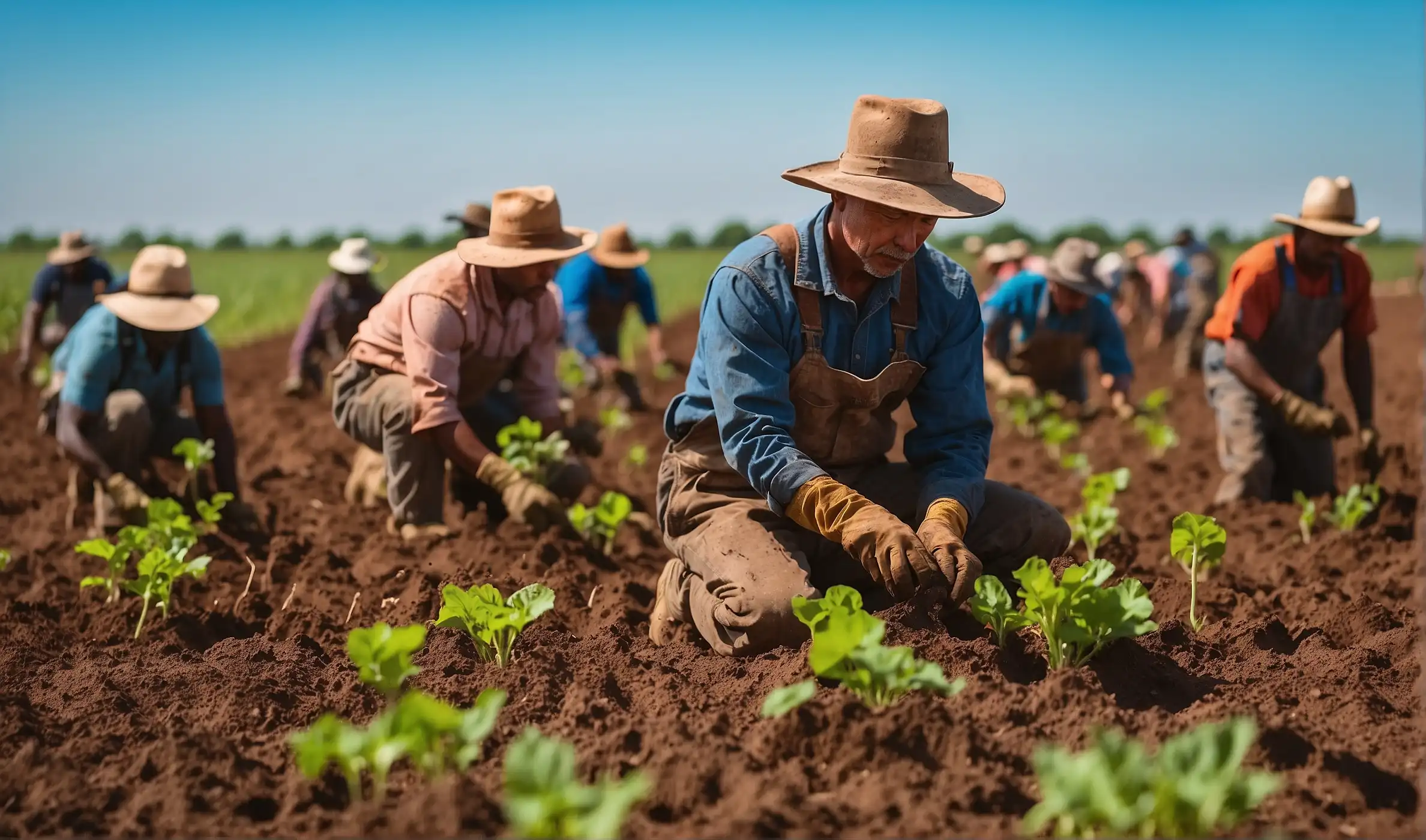In Texas, plant sweet potatoes from March to June. Choose a date after the last frost for optimal growth.
Sweet potatoes thrive in Texas’s warm climate, making it an ideal region for growing this nutritious tuber. As a heat-loving plant, the sweet potato requires a long frost-free growing season to flourish. By planting between late March and June, gardeners in Texas ensure their crops benefit from the warm soil and consistent temperatures, essential for successful sweet potato cultivation.
Gardeners appreciate this timing as it aligns with the state’s natural growing conditions, allowing for sweet potatoes to develop their full flavor and size. This schedule also helps evade potential cold snaps that could damage the tender plants. By paying attention to these planting windows, Texans can harvest a bountiful crop of sweet potatoes in late summer or early fall.
Sweet Potato Planting Season In Texas
Understanding the distinct seasonal weather patterns in Texas is crucial for the successful cultivation of sweet potatoes. The right planting window can significantly affect both the growth and yield of sweet potato crops. Optimal planting typically falls between March and late May, aligning with the state’s mild spring temperatures. This timeframe allows sweet potatoes to flourish and avoid the hotter, drier summer conditions that may hinder growth. Planting within this recommended period gives the tubers ample time to develop before the first frost of autumn, ensuring a bountiful harvest.
Selecting The Proper Planting Window
To determine the ideal time for planting sweet potatoes in Texas, it’s essential to consider both regional variations and the temperature requirements of the crop. Texas spans multiple climate zones, meaning the planting window may shift depending on your location within the state. Sweet potatoes thrive in warm soil, necessitating a temperature of at least 60°F.
For instance, in the warmer southern regions, planting can often commence as early as March. In contrast, Northern areas may need to wait until late April or May for soil temperatures to rise adequately. Sweet potatoes require a long frost-free period—a minimum of 90 to 170 days—so timing is critical for a successful harvest. Due diligence in monitoring local weather patterns before planting cannot be overstated as it ensures that sweet potatoes have optimal growth conditions.
Preparing For Plantation: A Checklist
Sweet potatoes thrive in Texas warmth, necessitating well-prepared soil that is loose, well-drained, and rich in nutrients. Start by testing the soil to ensure a pH level between 5.5 and 6.5. Add compost or aged manure to enhance fertility if needed. Creating raised beds can improve drainage and warm the soil faster, fostering better growth. Proper preparation ensures the optimal environment for your sweet potatoes to flourish.
Selecting the ideal sweet potato variety is crucial for success in Texas. Opt for types like ‘Beauregard’, ‘Jewel’, or ‘Centennial’, known for their heat tolerance and good yield. These varieties have consistently proven to produce quality tubers in the Texas climate and soil conditions, making them a favorite among local gardeners.
When Do You Plant: Exact Timing
Sweet potato planting in Texas is best done from late March through June. Timing largely depends on regional climate variations. In Texas’ warmer southern regions, starting as early as March can yield favorable results. Central Texas gardeners often find April ideal for planting to avoid late frosts, while the northern areas may benefit from waiting until May or early June to ensure the soil temperature is consistently above 65°F.
Sweet potatoes are sensitive to cold, and any unexpected cold snap can damage or delay growth. For such events, gardeners should prepare to use row covers or plastic mulches to protect their crops. Continuously monitoring local weather forecasts and being ready to react to unseasonal weather patterns are key practices for a successful harvest.
| Texas Region | Recommended Planting Month |
|---|---|
| South Texas | March – April |
| Central Texas | April – May |
| North Texas | May – Early June |

Soil And Sunlight Conditions
Sweet potatoes thrive in well-drained, sandy loam soils with a pH range of 5.5 to 6.5. Proper drainage is critical to prevent rot and to facilitate robust root development. For gardeners wanting to optimize their soil composition, incorporating compost or well-rotted manure can improve soil structure and nutrient content, effectively nurturing sweet potato growth.
Sweet potatoes are sun-loving plants, requiring a minimum of 6 to 8 hours of full sunlight daily. The ample sun exposure ensures sufficient energy for photosynthesis, which in turn produces the starchy, flavorful tubers beloved by many. Planting sweet potatoes in areas that receive uninterrupted sunlight will result in the best yield and quality.
Ensuring Proper Spacing And Depth
Proper spacing between sweet potato slips is crucial to ensure healthy growth and optimal yield. Each slip should be planted approximately 12 to 18 inches apart, allowing ample room for the vines to spread and the tubers to expand. This spacing helps to prevent overcrowding, which can lead to reduced air circulation and increased susceptibility to pests and diseases.
For the appropriate planting depth, sweet potato slips should be partially buried, with at least half of the slip submerged. This typically equates to a depth of about 4 inches. Adequate depth is essential as it promotes strong root development, which is critical for establishing a robust plant capable of producing bountiful sweet potatoes.
Nurturing Sweet Potatoes Post-planting
For sweet potato cultivation in Texas, consistent watering is crucial, especially during the first few weeks post-planting. Aim to maintain a balance, keeping the soil moist but not waterlogged. Once established, sweet potatoes require less water, making them relatively drought tolerant.
On the fertilization front, applying a balanced N-P-K fertilizer at planting followed by a potassium-rich formula halfway through the growing season can bolster root development. Regular monitoring is essential to detect signs of nutritional deficiencies early on.
Combatting pests and diseases requires vigilance. Sweet potatoes may attract weevils or nematodes, and can be prone to fungal diseases like black rot. Implementing preventative measures such as crop rotation and utilizing pest-resistant varieties can mitigate these risks. Employ organic pesticides or fungicides when necessary, adhering to the manufacturer’s guidelines.
Learn more: Why Do My Potatoes Taste Sweet
Anticipating And Managing The Harvest
To ensure a bountiful sweet potato harvest, identifying the signs of maturity is crucial. Sweet potatoes generally reach maturity approximately 90 to 120 days post-planting, although this can vary depending on the variety. The skin of the sweet potato should have a uniform color and the tubers should be firm to the touch when they are ready for harvest.
Adopting proper techniques for harvesting and curing is essential to the quality and longevity of your sweet potatoes. Harvesting should be done carefully; use a spade fork to loosen the soil around the plant, avoiding any damage to the tubers. Once harvested, sweet potatoes must undergo a curing process to enhance their natural sweetness and extend their shelf life. Cure the sweet potatoes by keeping them at roughly 85°F with high humidity for about 10 to 14 days. After curing, store the sweet potatoes in a cool, dry place around 55°F to 60°F.
Extending Sweet Potato Growing Season
To extend the sweet potato growing season in Texas, gardeners can opt for early starts and late harvests. Strategic use of coverings, such as frost cloths, can shield plants from unexpected late spring frosts or early autumn chills, safeguarding sprouts and extending the growth period. Mulch, including straw or shredded leaves, plays a crucial role by insulating the soil, maintaining a consistent temperature around the sweet potatoes. This not only protects from cold snaps but also helps to retain moisture during drier periods.
Implementing mulch is most effective when applied to the base of plants after they have been established, and it is recommended to maintain a layer of about 2 to 3 inches. For early starts, black plastic mulch can warm the soil beforehand, making it possible to plant sweet potatoes earlier than the traditional planting window. As for late harvests, maintaining the soil’s warmth through thermal mass materials, such as stones or water jugs, can keep crops in the ground longer, allowing tubers to grow to their full potential before the first frost hits. Both tactics create conditions favorable for a bountiful yield.
FAQs Of When Do You Plant Sweet Potatoes In Texas
What’s The Ideal Time To Plant Sweet Potatoes In Texas?
Sweet potatoes in Texas are best planted between late March and mid-June. The key is to wait until the soil temperature consistently stays above 60°F.
How Long Do Sweet Potatoes Take To Grow In Texas?
Sweet potatoes typically take about 90 to 120 days to mature in Texas. It’s important to choose a variety that fits well with the Texas climate.
Can You Grow Sweet Potatoes Year-round In Texas?
No, sweet potatoes cannot be grown year-round in Texas. They require warm soil and do not tolerate frost. Plant them after the last spring frost date.
What Soil Conditions Favor Sweet Potatoes In Texas?
Sweet potatoes prefer well-drained, sandy loam soil with a pH of 5. 8 to 6. 2. Before planting, make sure to prepare your garden bed to meet these conditions.
Conclusion
Planting sweet potatoes in Texas aligns with the warm climate, ideally from late March to June. Tailoring your gardening to these months enhances growth success. Embrace Texas’ prime planting season and enjoy a bountiful sweet potato harvest. Happy gardening, and may your efforts flourish in the Lone Star State’s fertile soils.
For more expert guidance on seasonal planting and sustainable practices, Farm Pioneer is your trusted companion in agriculture.
